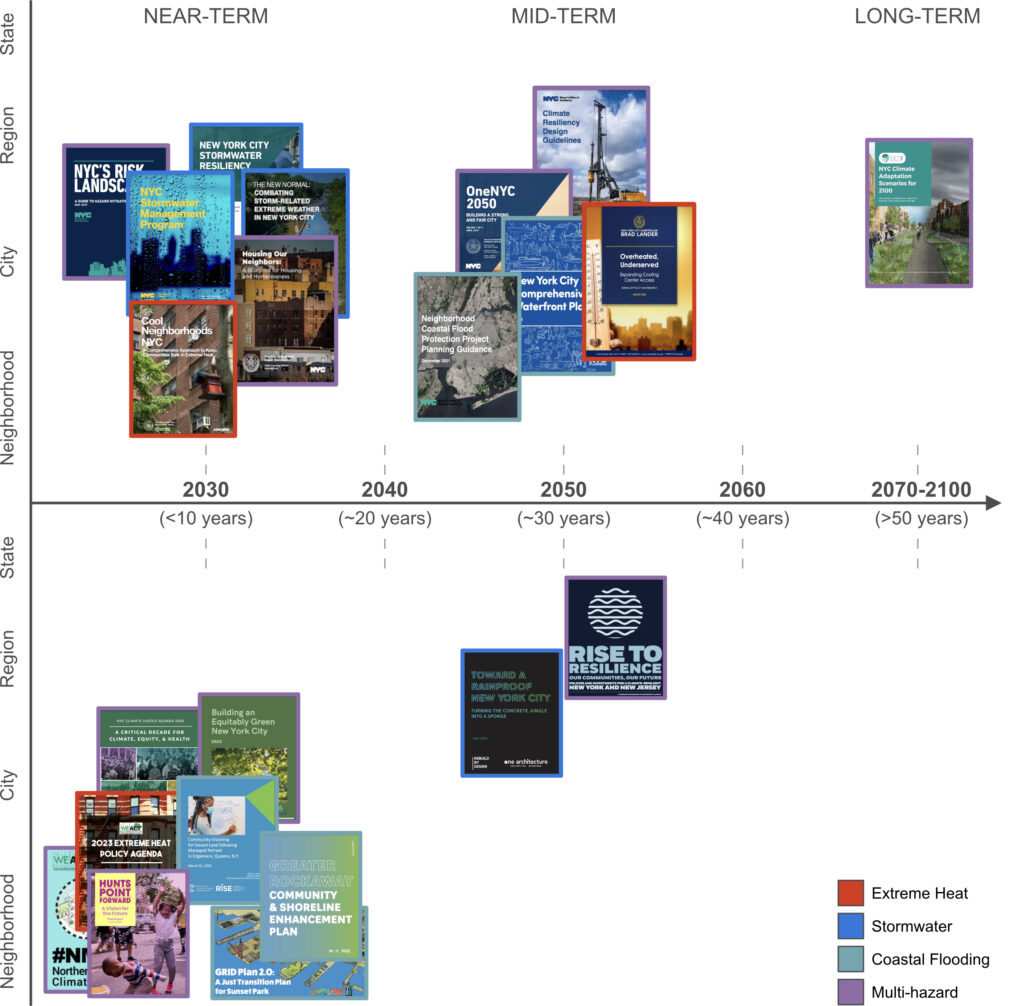In addition to the projected climate hazards, including potential exposure of vulnerable populations, critical infrastructure, and ecosystems discussed in this NPCC 4th assessment (NPCC4), there are a myriad socio-demographic, economic, infrastructure, and ecological futures that will unfold in the complex urban system of New York City (NYC) that, in turn, will impact the city’s future risk and resilience to climate change.
This NPCC4 chapter is the first effort by the NPCC to describe positive future visions, scenarios, and their intersections with current challenges, which can inform new opportunities for equitable climate change policy, planning, and engagement across the diverse fabric of NYC.
The chapter begins with a description of concepts and tools used for exploring the future. It provides a historical overview of NYC’s major urban planning approaches adopted over the last 100 years and discusses scenario planning as a useful approach for improving urban planning and decision-making in an uncertain world. It describes climate and population projections, and health valuation as tools that can help the City understand its possible futures. And it describes the usefulness of exploring possible and desired futures.

This chapter also offers a way to understand the city as a complex urban system with interdependencies among social, ecological, and technical infrastructure components. To illustrate this complexity, it provides an overview of community-centered climate adaptation and resilience plans enacted in the city, across temporal and spatial scales, that address concerns ranging from transportation to energy and heat resilience. Understanding the interdependencies and gaps in a range of planning efforts can help reduce siloing in future efforts.
The chapter concludes with a discussion of the limitations of current scenarios and approaches for envisioning the future of New York City, uncertainty with analyses and future scenario planning, and the need for sustained engagement and research in this area.
Photo Credit: Williamsburg Bridge: Climate Adaptation Partners
